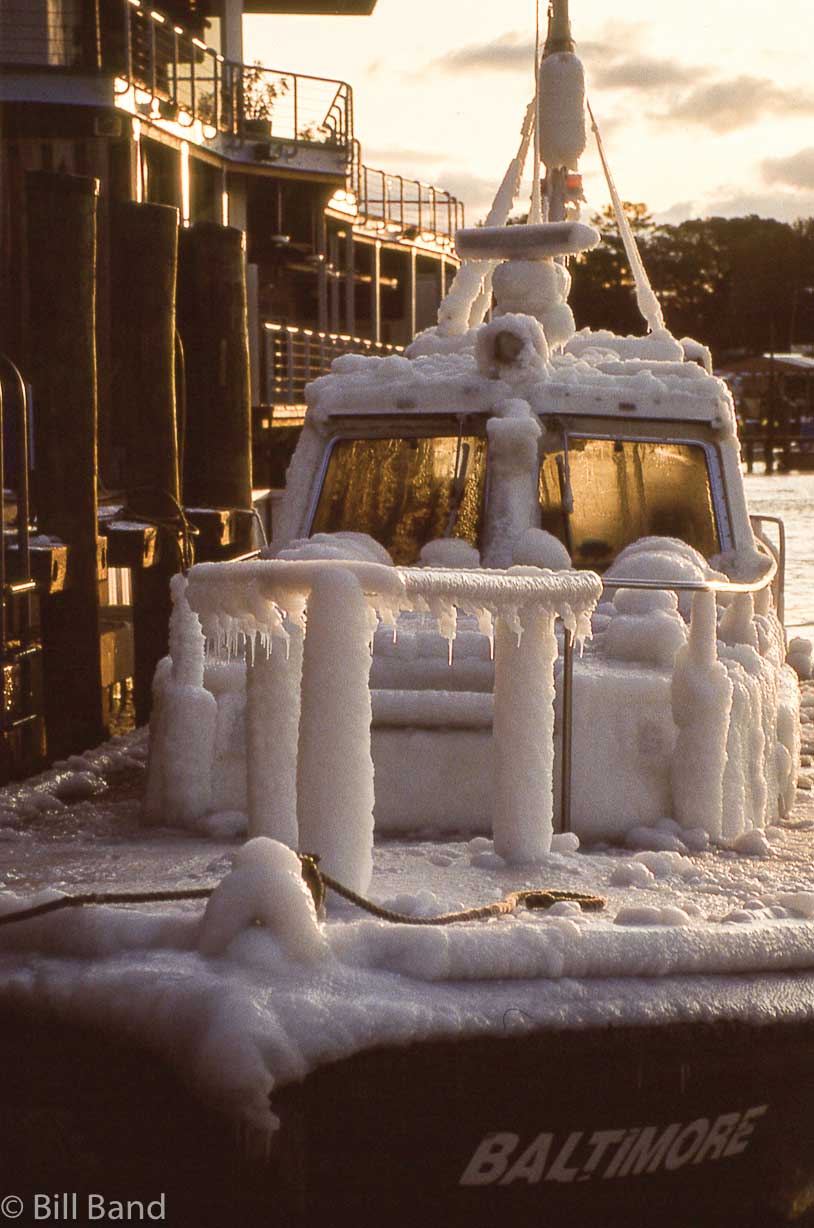Mid February 1994 and sailing outbound from Baltimore aboard the M/V San Lorenzo was a chilly affair. The wind was blowing 20-25 knots from the northwest with higher gusts, which gave the ship a good push during my nine-hour transit down the Chesapeake Bay. Visibility was excellent as the cold Canadian air asserted itself throughout the Mid-Atlantic states.

Two hours out from the Virginia Capes, I contacted the pilot tower on VHF Channel 11 to update my ETA (estimated time of arrival). The tower advised me to have the pilot ladder rigged on the starboard side, and requested that, due to possible ice accumulation, the ladder be kept on deck until the pilot boat arrived alongside my ship.
The pilot boat Baltimore is 44 feet in length and weighs 20 tons. She is a rugged sea boat built by the Halmatic Company (United Kingdom) in 1985. I had been aboard her in all sorts of weather and never felt undue concern. However, she was a wet boat when heading into a sea. This was not a big deal, except on occasion when going out on deck to board a ship without a good lee.
At 0430, with the Baltimore standing off the starboard side of my ship, I reduced speed and put the wind on the portside to create a lee. Completing the pilot/master exchange, whereby I determined that the captain both understood and was comfortable with his surroundings, I bid him a safe voyage and proceeded to the main deck, escorted by the chief mate. Crewmen then lowered the ladder to the deck of the pilot boat, which was now lying on the side of the ship. The boat operator, Jerry Stillman, warned me via VHF to be careful, as there was ice on the boat’s deck. Deckhand Marc Gorfine was there to assist me. I easily made the transition from the ladder to the pilot boat, and into the after-cabin doors. All seemed well.
As we fell off (nautical term for left the ship) the ship’s side and out of its lee, I realized that sea conditions were worse than what I could see in the dark from the ship’s bridge. To make things more uncomfortable, we were now taking seas on the starboard bow as we headed west towards Lynnhaven Inlet three miles distant. Each time the boat pitched downward a wave washed over the boat’s foredeck, some of it freezing. Spray whipped by the wind hit the boat’s rigging and began to accumulate as ice. When the boat rolled in the seaway, it took longer to right itself. We then developed a significant port list, which gradually became more profound.
The boat was struggling to keep its stability as the ice became heavier. The concern on Jerry and Marc’s faces was no different than what must have been painted on my own. Jerry throttled back on speed, and we slowly worked our way back to the station. I moved over to one of the seats on the starboard side and held on in the vain hope that it would make a difference. It was a certainty that the pilot tower was watching our progress, but because of the darkness, all they could see were our navigation lights. If the boat were to roll over, we knew that rescue would never arrive on time…. our fate would be sealed.
It seemed to take forever, but we did make it back safely. It was still dark, and after determining that there was no more ship traffic, I asked Jerry and Marc not to knock off any ice until I could take photographs when dawn arrived. While waiting for daybreak, I had a hot cup of coffee and felt the flood of relief that comes with escaping the possibility of losing my life. Even today I hold it as a vivid memory.
By Bill Band